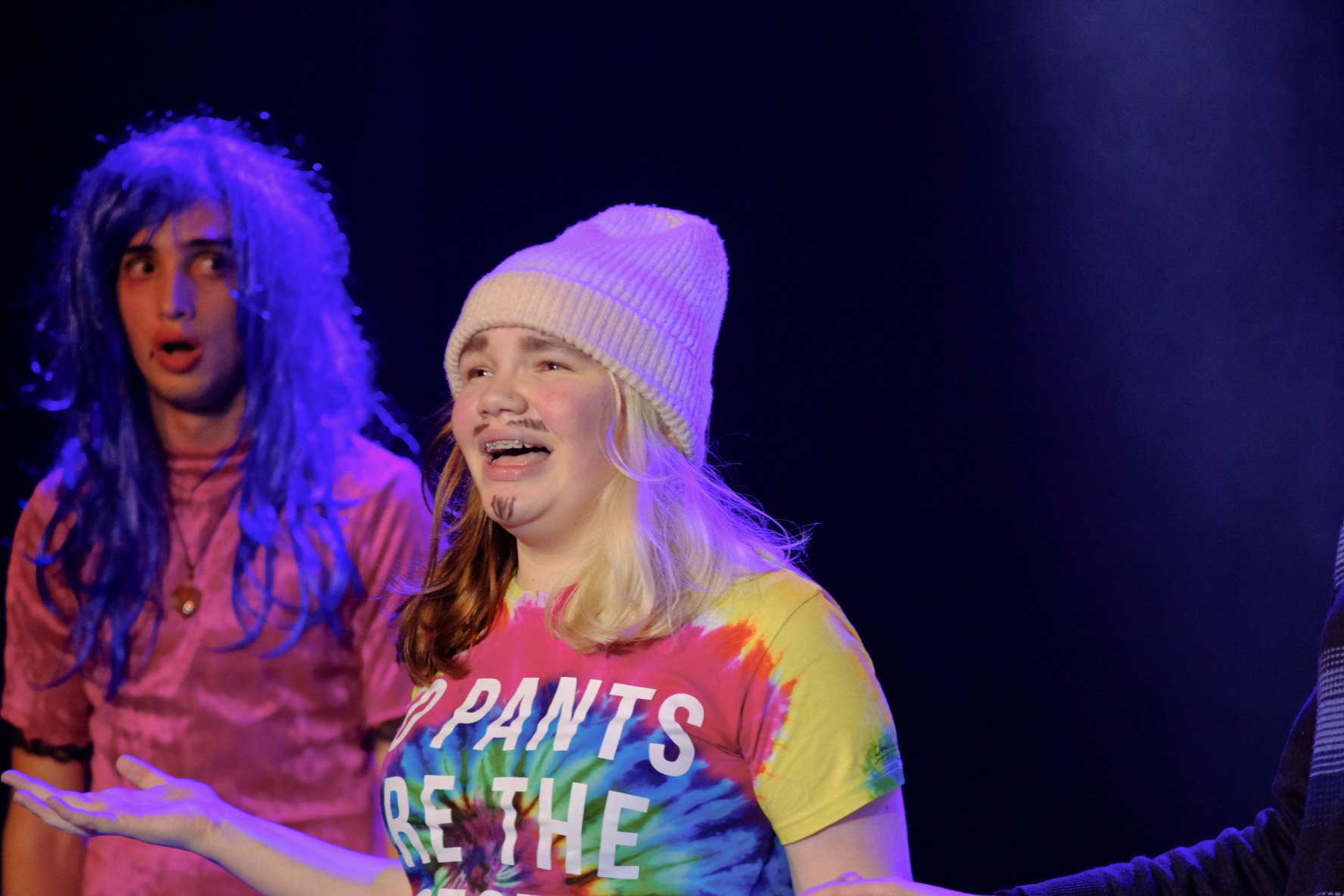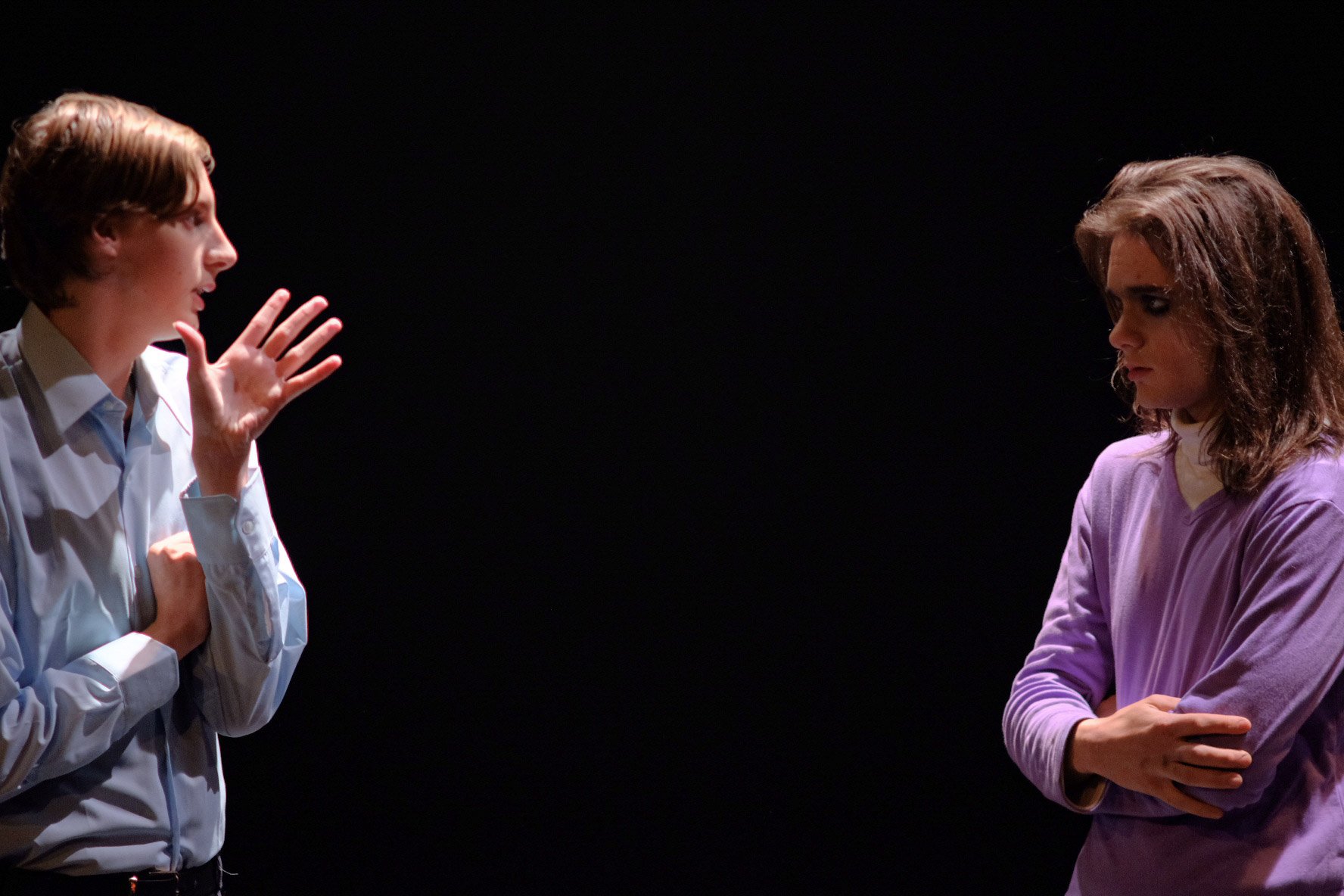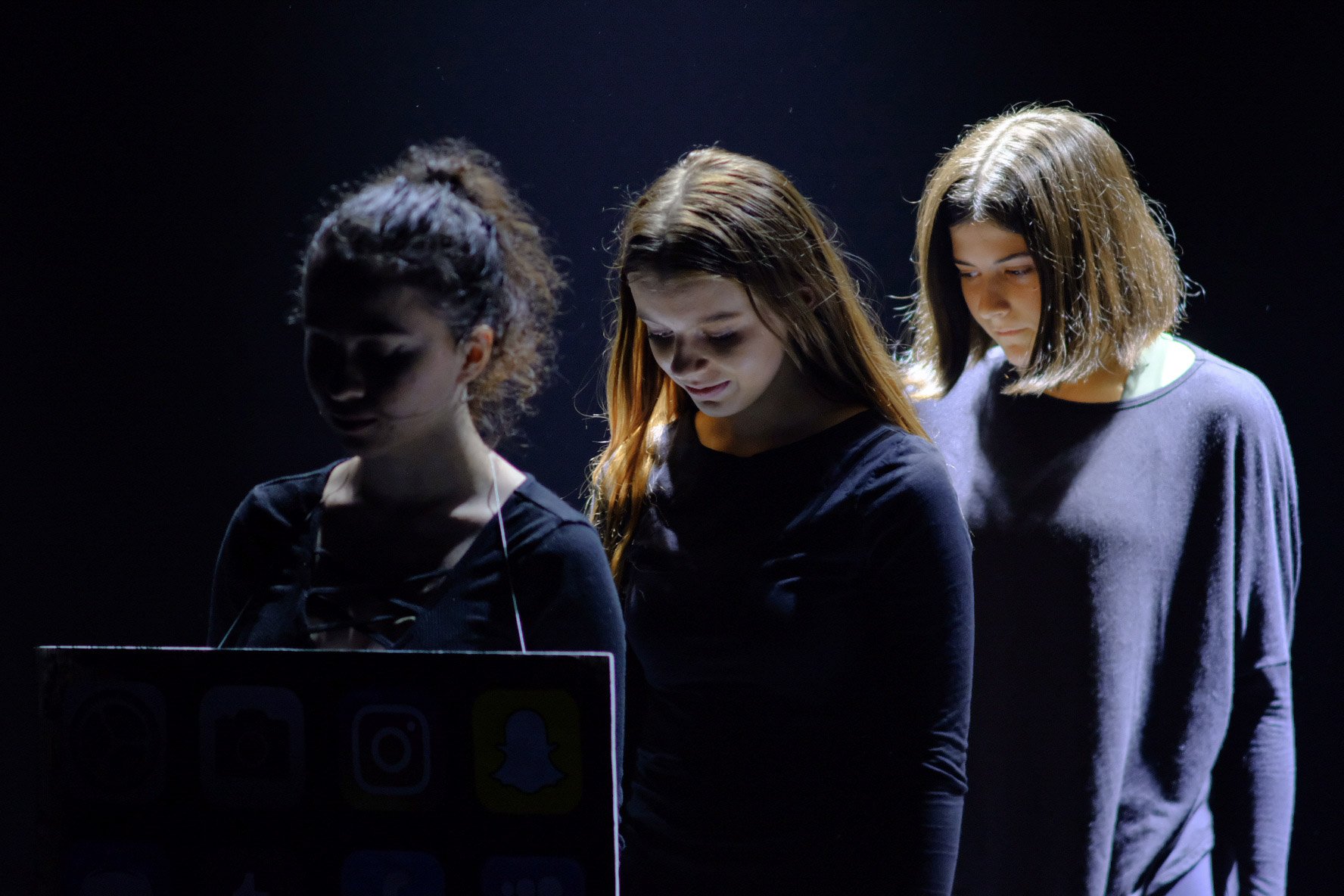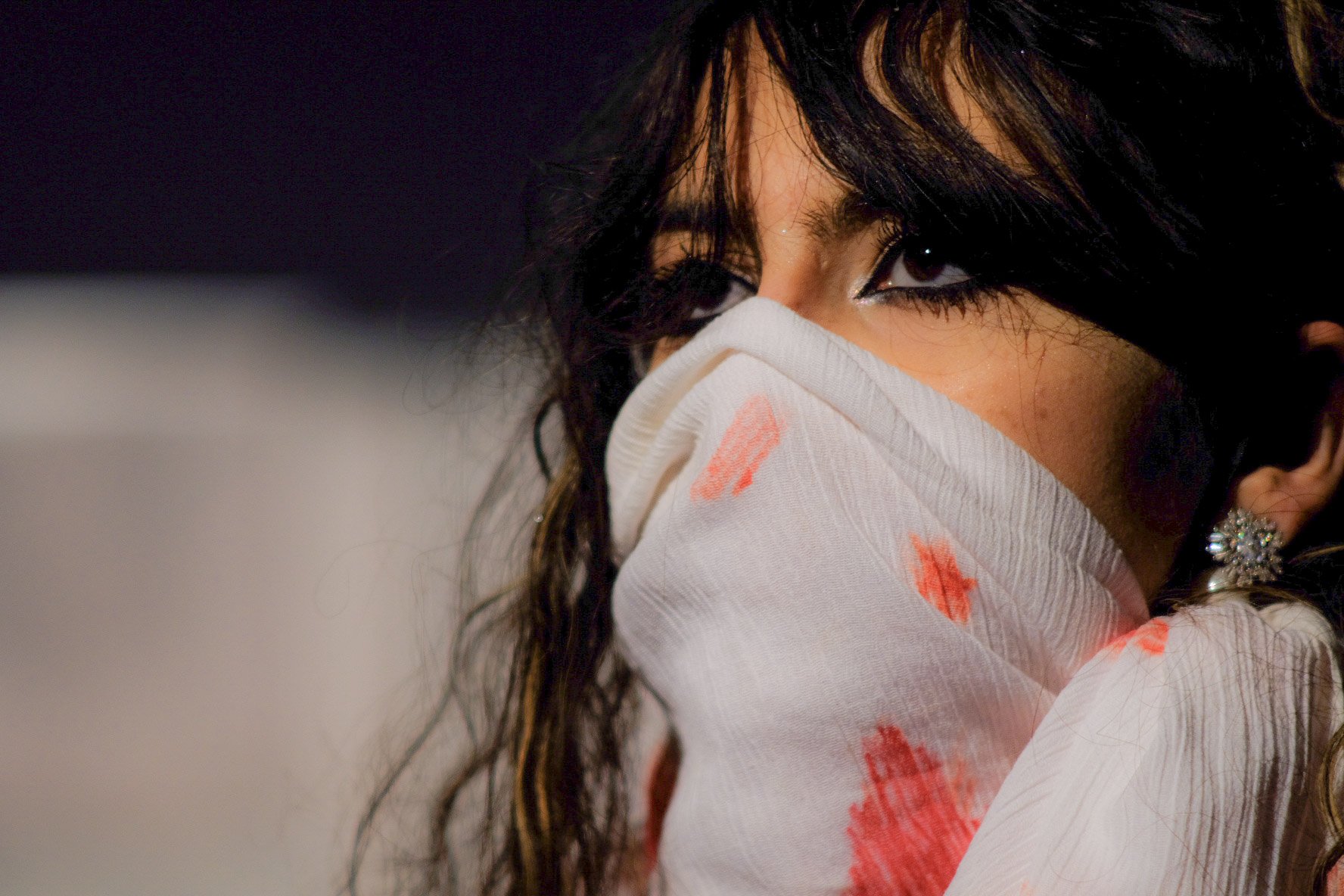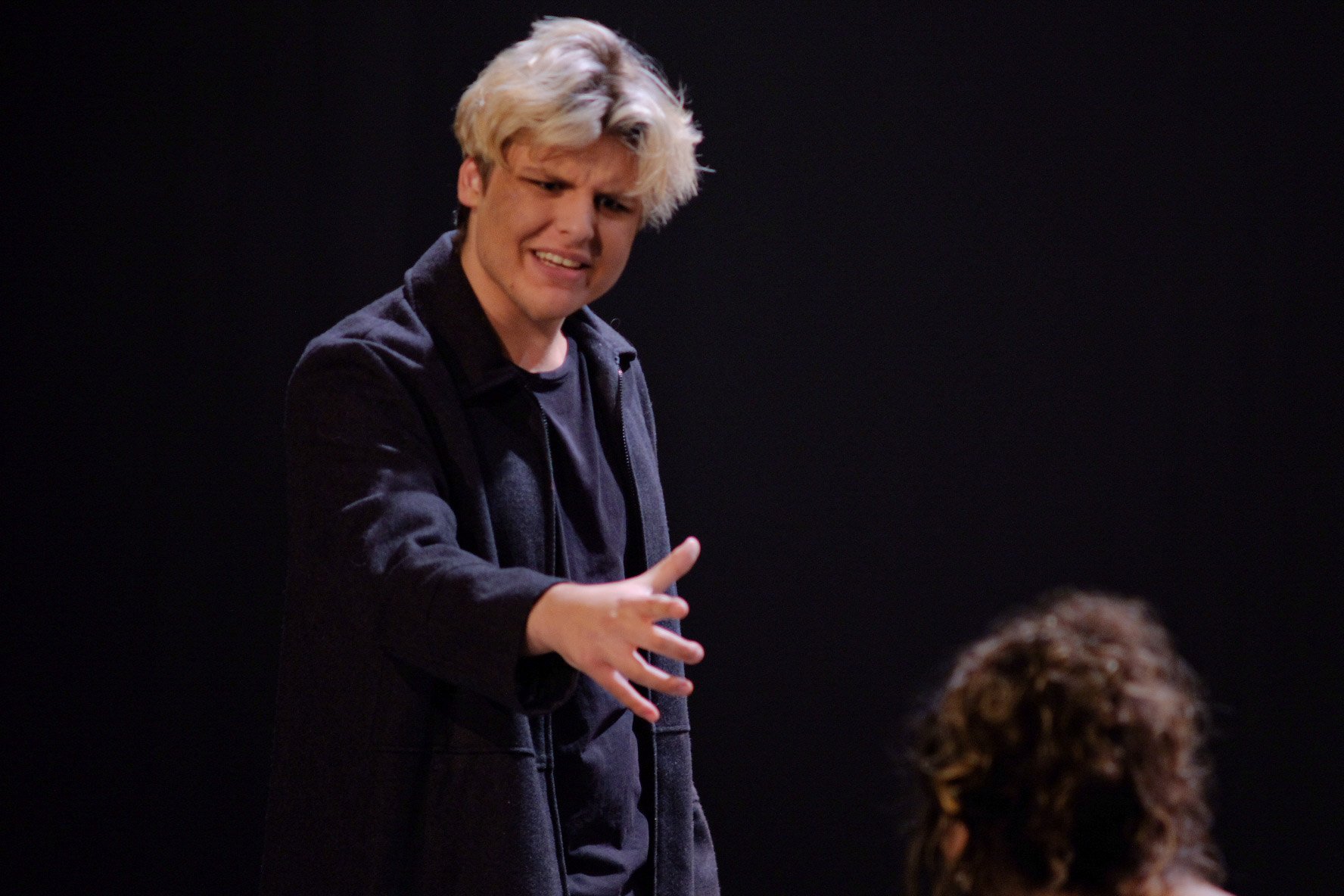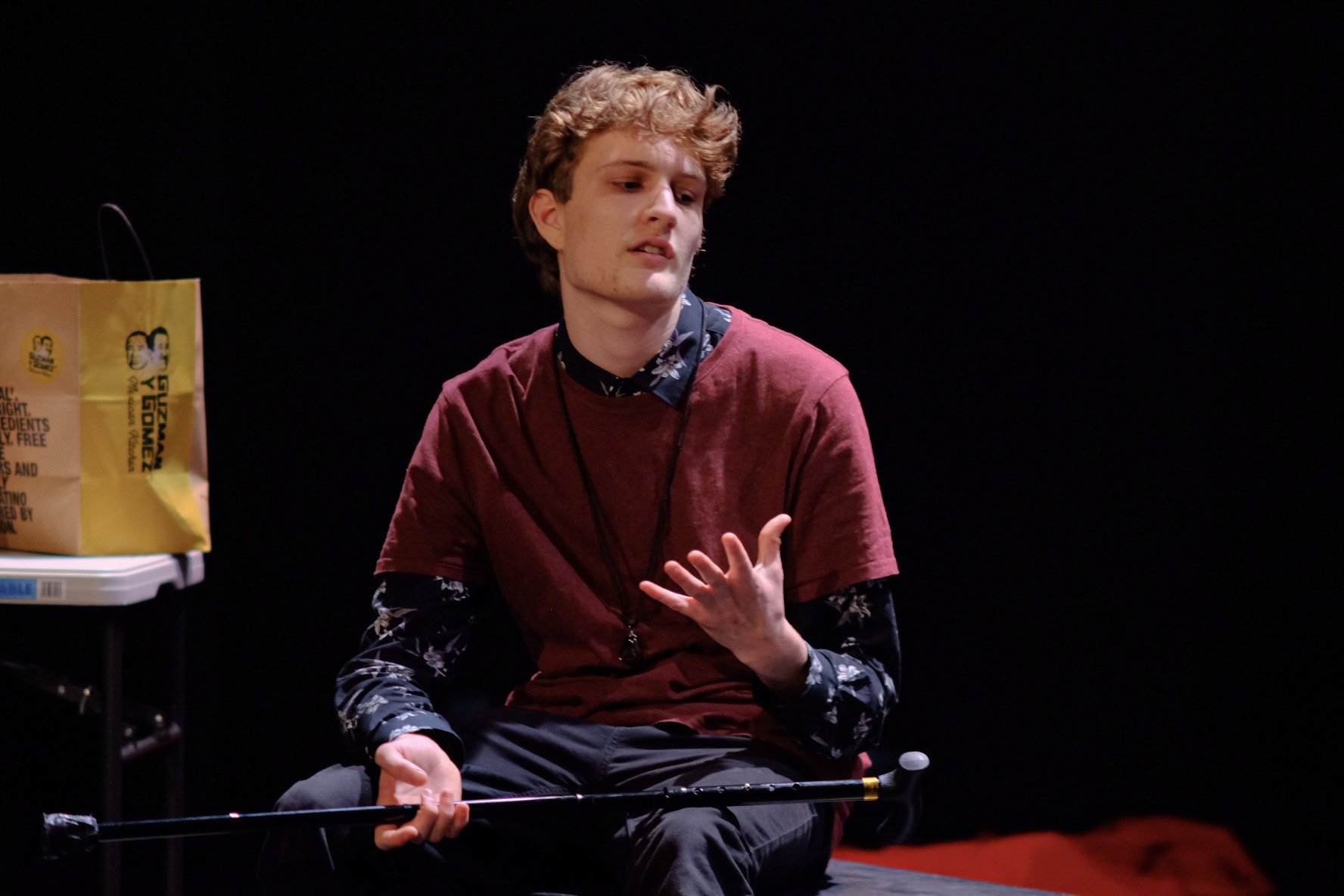Drama
Unit 1-4 (Unit 1-2 offered in 2026)
Rationale
VCE Drama focuses on the creation and performance of characters and stories that communicate ideas, meaning and messages. Students use creative processes, a range of stimulus material and play-making techniques to develop and present devised work. Students learn about and draw on a range of performance styles relevant to practices of ritual and story-telling, contemporary drama practice and the work of significant drama practitioners.
Students explore characteristics of selected performance and apply and manipulate conventions, dramatic elements and production areas. They use performance skills and expressive skills to explore and develop role and character. The performances they create will go beyond the reality of life as it is lived and may pass comment on or respond to aspects of the real world. These performances can occur in any space. Students also analyse the development of their own work and performances by other drama practitioners.
Entry
There are no prerequisites for entry to Unit 1 or 2, but students must complete Unit 3 before attempting Unit 4.
Unit 1: Introducing performance styles
In this unit students study three or more performance styles from a range of social, historical and cultural contexts. They examine drama traditions of ritual and storytelling to devise performances that go beyond re-creation and/or representation of real life as it is lived.
This unit focuses on creating, presenting and analysing a devised solo and/or ensemble performance that includes real or imagined characters and is based on stimulus material that reflects personal, cultural and/or community experiences and stories. This unit also involves analysis of a student’s own performance work and a work by professional drama performers.
Students apply play-making techniques to shape and give meaning to their performance. They manipulate expressive and performance skills in the creation and presentation of characters, and develop awareness and understanding of how characters are portrayed in a range of performance styles. They document the processes they use as they explore a range of stimulus material, and experiment with production areas, dramatic elements, conventions and performance styles.
In this unit the terms character, performance, story and style may be understood as one or more characters, performances, stories or styles.
Unit 2: Australian Identity
In this unit students study aspects of Australian identity evident in contemporary drama practice. This may also involve exploring the work of selected drama practitioners and associated performance styles. This unit focuses on the use and documentation of the processes involved in constructing a devised solo or ensemble performance. Students create, present and analyse a performance based on a person, an event, an issue, a place, an artwork, a text and/or an icon from a contemporary or historical Australian context.
In creating the performance, students use stimulus material that allows them to explore an aspect or aspects of Australian identity. They examine selected performance styles and explore the associated conventions. Students further develop their knowledge of the conventions of transformation of character, time and place, the application of symbol, and how these conventions may be manipulated to create meaning in performance and the use of dramatic elements and production areas.
Students analyse their own performance work as well as undertaking an analysis of a performance of an Australian work, where possible, by professional actors. An Australian work might: be written, adapted or devised by Australian writers or theatre-makers reflect aspects of Australian identity, for example the voice of Australia’s first peoples, the Celtic perspective, the twentieth or twenty-first century migrant experience, the refugee experience, urban and rural perspectives.
Across this unit, students study performance styles from a range of historical and/or social and/or cultural contexts. In this unit the terms character, performance, story and style may be understood as one or more characters, performances, stories or styles.
Unit 3: Devised ensemble performance
In this unit students explore the work of drama practitioners and draw on contemporary practice as they devise ensemble performance work. Students explore performance styles and associated conventions from a diverse range of contemporary and/or traditional contexts. They work collaboratively to devise, develop and present an ensemble performance. Students create work that reflects a specific performance style or one that draws on multiple performance styles and is therefore eclectic in nature. They use play-making techniques to extract dramatic potential from stimulus material, then apply and manipulate conventions, dramatic elements, expressive skills, performance skills and production areas. Throughout development of the work they experiment with transformation of character, time and place, and application of symbol. Students devise and shape their work to communicate meaning or to have a specific impact on their audience. In addition, students document and evaluate stages involved in the creation, development and presentation of the ensemble performance.
Students analyse and evaluate a professional drama performance selected from the prescribed VCE Drama Unit 3 Playlist published annually on the VCAA website.
In this unit the terms character, performance, story and style can be understood as one or more characters, performances, stories or styles.
Unit 4: Devised solo performance
This unit focuses on the development and the presentation of devised solo performances. Students explore contemporary practice and works that are eclectic in nature; that is, they draw on a range of performance styles and associated conventions from a diverse range of contemporary and traditional contexts. Students develop skills in extracting dramatic potential from stimulus material and use play-making techniques to develop and present a short solo performance. They experiment with application of symbol and transformation of character, time and place. They apply conventions, dramatic elements, expressive skills, performance skills and performance styles to shape and give meaning to their work. Students further develop and refine these skills as they create a performance in response to a prescribed structure. They consider the use of production areas to enhance their performance and the application of symbol and transformations. Students document and evaluate the stages involved in the creation, development and presentation of their solo performance. Students are encouraged to attend performances that incorporate a range of performance styles to support their work in this unit.
Assessment
Satisfactory Completion:
The award of satisfactory completion for a unit is based on a decision that the student has demonstrated achievement of the set of outcomes specified for the unit. This decision will be based on the teacher’s assessment of the student’s performance on assessment tasks designated for the unit.
Levels of Achievement
Units 1 and 2:
Procedures for the assessment of levels of achievement in Units 1 and 2 are a matter for school decision.
Units 3 and 4:
The Victorian Curriculum and Assessment Authority will supervise the assessment of all students undertaking Units 3 and 4. In the study of VCE Drama, students’ level of achievement will be determined by School-assessed Coursework (SACs), a performance examination and a written examination.
Unit 3 School-assessed Coursework: 40 %
Unit 4 School-assessed Coursework: 35 %
End-of-year examination: 25 %



